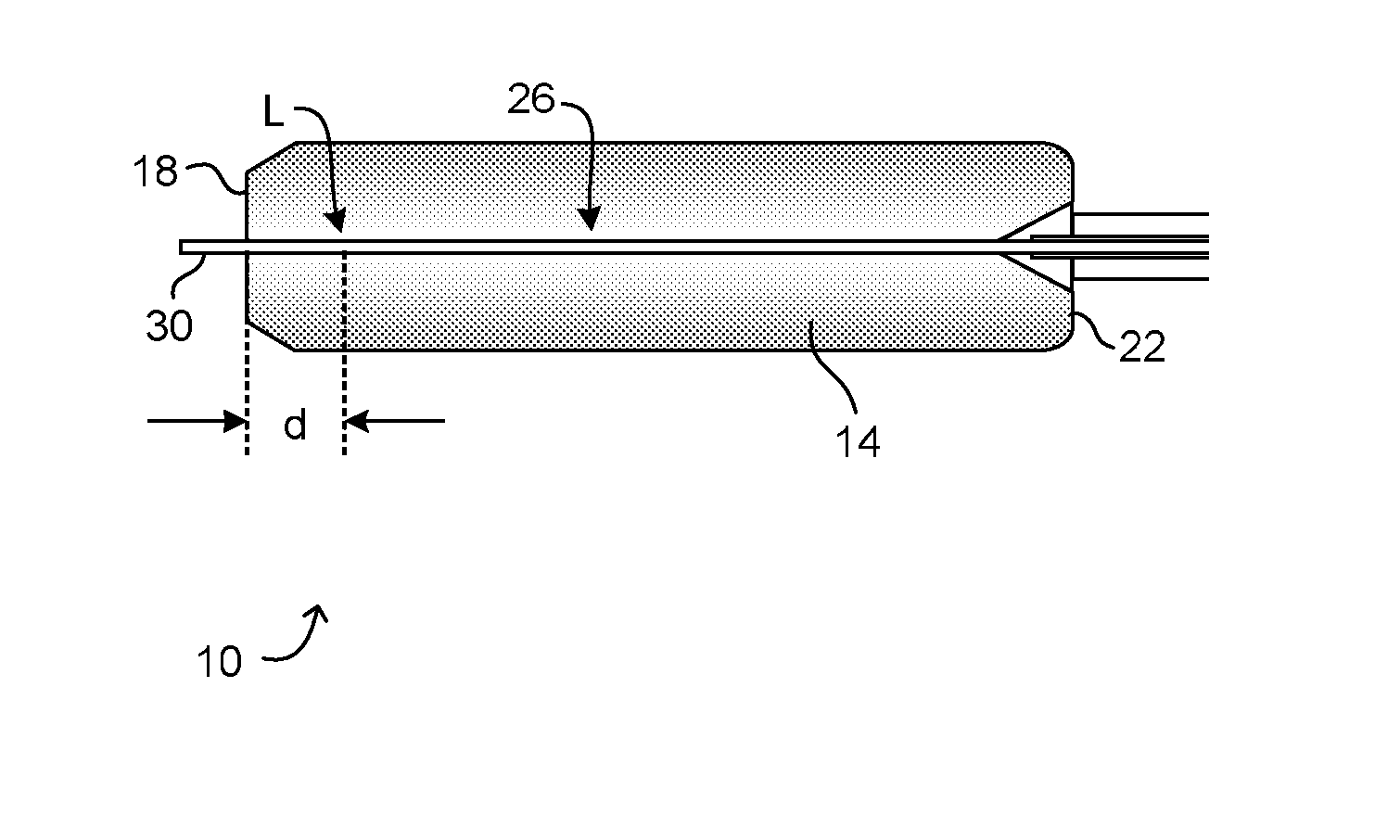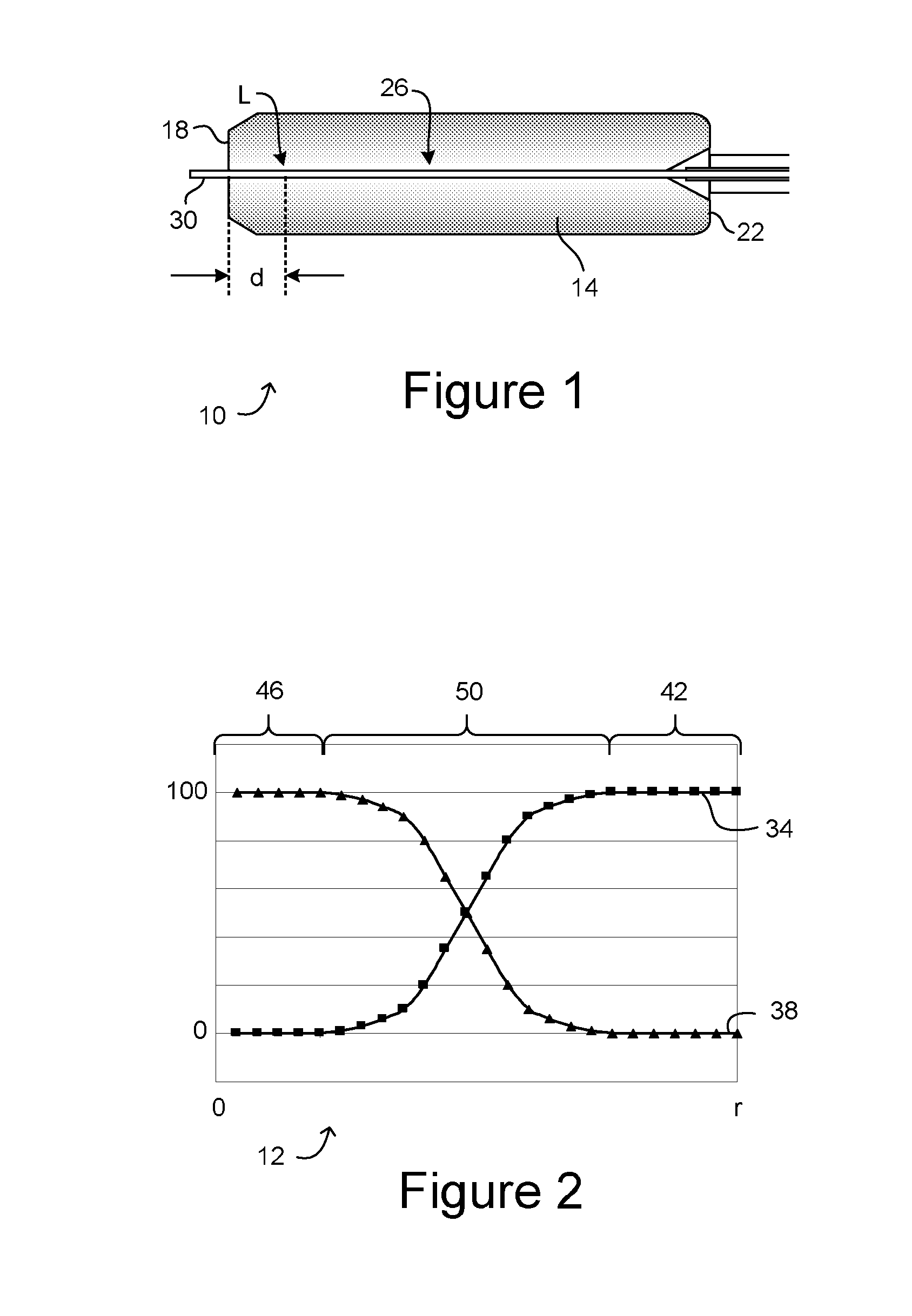Optical fiber and composite inorganic ferrule assemblies and methods
a technology of inorganic ferrules and optical fibers, applied in the direction of glass making apparatus, manufacturing tools, instruments, etc., can solve the problems of difficult to achieve repeatable quality in the adhesive bond, limited pot life after mixing, undesired long curing time after application, etc., to achieve excellent dimensional stability and limited pot life
- Summary
- Abstract
- Description
- Claims
- Application Information
AI Technical Summary
Benefits of technology
Problems solved by technology
Method used
Image
Examples
Embodiment Construction
[0013]According to one aspect of the present disclosure, and with particular reference to the cross-sectional diagram of FIG. 1, a pre-terminated optical fiber assembly 10 comprises a ferrule 14 having front and rear opposed faces 18, 22 and at least one fiber bore 26 defined longitudinally therethrough. A glass optical fiber 30 is disposed within the at least one fiber bore 26 of the ferrule 14. The fiber 30 is fused (e.g., merged / melted together; blended to form a single entity) to the ferrule 14 at a location L at least 1 mm deep inside the at least one fiber bore 26, or in other words, at a location L which is a distance d from the front face 18 of the ferrule 14, where d is at least 1 mm (e.g., at least 2 mm, at least 5 mm) The ferrule 14 is composed of an inorganic composite material, the composite comprising a material gradient from at least 75% by volume of a first inorganic material to at least 75% by volume of second inorganic material in the radially inward direction, the...
PUM
| Property | Measurement | Unit |
|---|---|---|
| softening point | aaaaa | aaaaa |
| softening point | aaaaa | aaaaa |
| distance | aaaaa | aaaaa |
Abstract
Description
Claims
Application Information
 Login to View More
Login to View More - R&D
- Intellectual Property
- Life Sciences
- Materials
- Tech Scout
- Unparalleled Data Quality
- Higher Quality Content
- 60% Fewer Hallucinations
Browse by: Latest US Patents, China's latest patents, Technical Efficacy Thesaurus, Application Domain, Technology Topic, Popular Technical Reports.
© 2025 PatSnap. All rights reserved.Legal|Privacy policy|Modern Slavery Act Transparency Statement|Sitemap|About US| Contact US: help@patsnap.com



